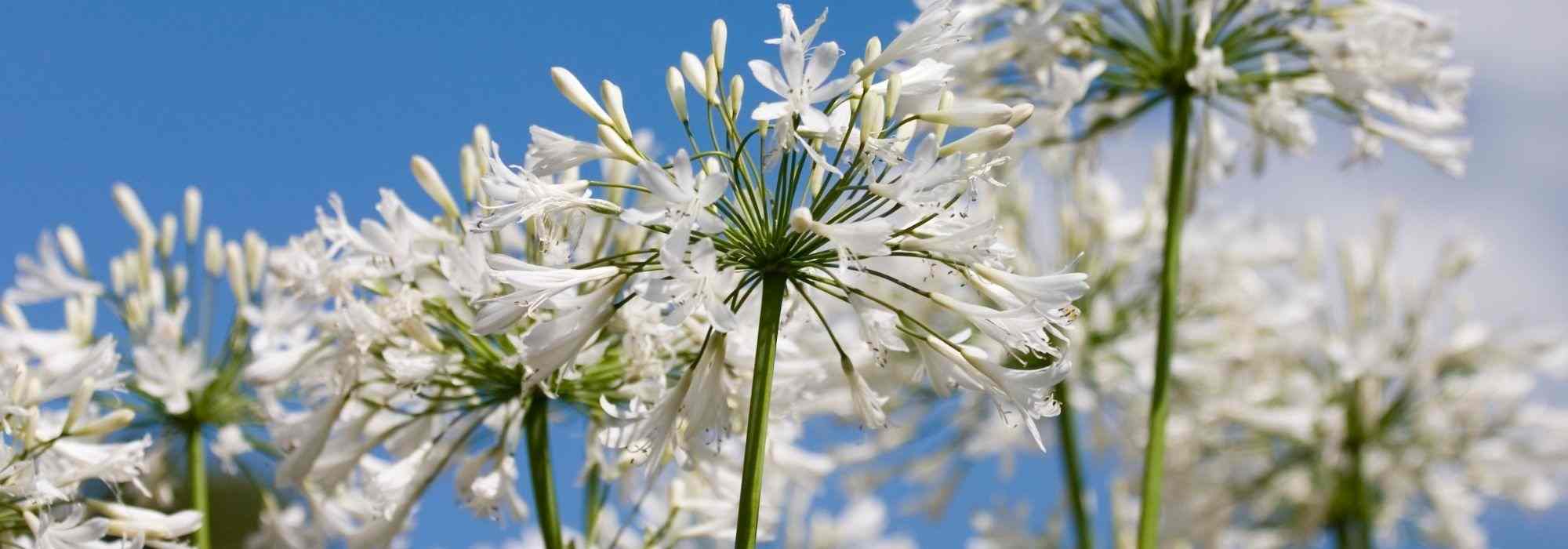
White Agapanthus: 7 Varieties to Discover
Our selection full of shades
Contents
The agapanthus, these large umbels, often blue and sometimes white, swaying in the breeze, are very common in coastal areas with not too dry summers, such as Brittany and the Atlantic coast. The white agapanthus fit into all types of gardens: from the most contemporary to the most natural, including the white garden. Discover our selection of white agapanthus, as beautiful as they are bright!
Agapanthus africanus 'Albus', a classic essential
With its large white umbels measuring 15 cm in diameter positioned well above the foliage, the Agapanthus africanus or umbellatus ‘Albus’ should not be confused with the Agapanthus praecox, even though they tend to hybridise in the wild.
This is a rare form that can reach 1 m in height. The foliage is semi-evergreen to evergreen depending on weather conditions. Due to its somewhat hardy character (-5°C), this agapanthus will thrive in mild climates, particularly by the sea. North of the Loire, it should be grown in pots or containers.
It will look stunning alongside, for example, the Buenos Aires verbena or other blue or mauve agapanthus for a sleek style.
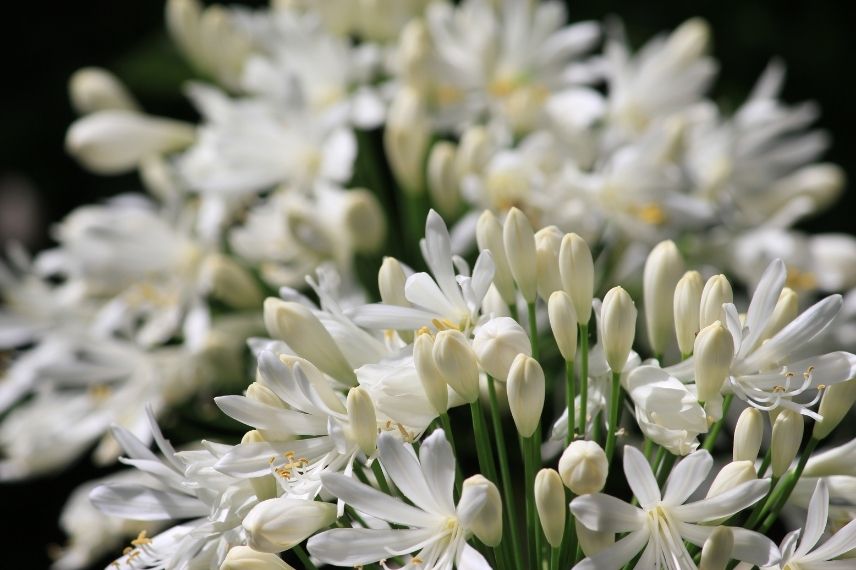
(Photo Maria de la lue wischnew)
The Agapanthus 'Graphite White', a very graphic variety
The ‘Graphite White’ Agapanthus is a hybrid of rare elegance that reaches a height of 90 cm, with dark flower stems that have a tin-like sheen. These highlight the whiteness of the large umbels measuring 10 to 15 cm and create a striking contrast with its bright green foliage. In autumn, the deciduous foliage disappears.
Thanks to its hardiness down to -15°C, this variety can be integrated into borders in many regions.
It pairs beautifully with the ‘Graphite Blue’ Agapanthus and also with light-toned grasses, such as Stipa or Angel’s Hair, which will accentuate the dark stems of this beautiful rarity. Consider topiaries to accompany these graphic agapanthus and create a very minimalist and contemporary garden.
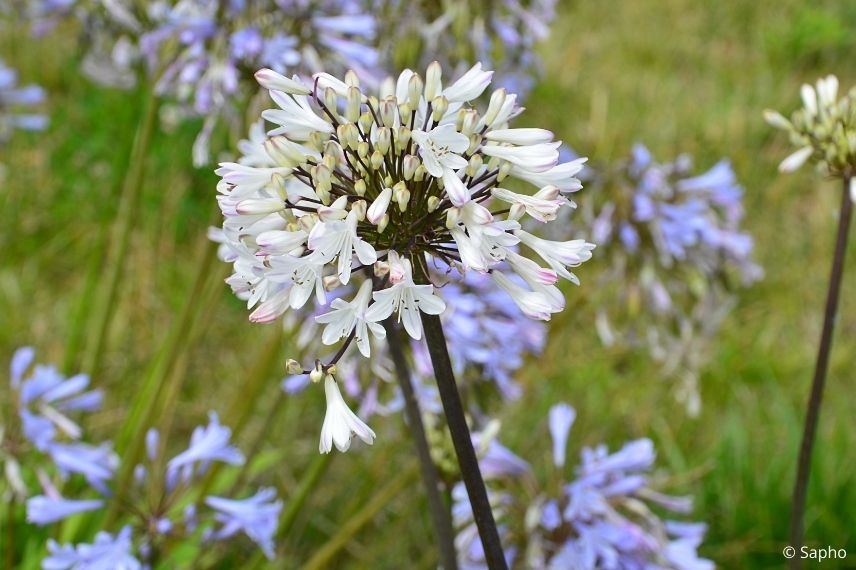
Discover other Agapanthus - Lily of the Nile
View all →Available in 0 sizes
Available in 1 sizes
Available in 5 sizes
Available in 2 sizes
Available in 0 sizes
Available in 2 sizes
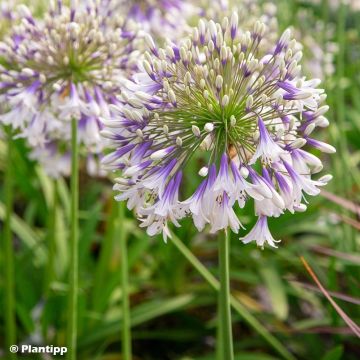
Available in 3 sizes
Available in 0 sizes
Available in 4 sizes
Available in 0 sizes
The 'Pitchoune White' Agapanthus, the small variety with great potential
The Agapanthus ‘Pitchoune White’ has a more compact habit than most agapanthus, making it the ideal candidate for borders or container growing. When the flowers bloom, it reaches a maximum height of 60 cm, fitting perfectly into small spaces.
Its pure white umbels are well-formed and measure 12 to 15 cm in diameter. The flowering, which is very abundant in summer, is repeat flowering until September. Additionally, its evergreen foliage remains a vibrant green, providing interest in the garden or on the balcony throughout the year if winters are mild.
Being hardy down to -5°C, this agapanthus can be planted at the front of borders in regions with mild winters and in pots elsewhere. Choose a sufficiently large container to allow the plant to produce beautiful flower spikes.
The Agapanthus ‘Pitchoune White’ can be paired with its relative, the ‘Pitchoune Blue’. It also looks stunning with santolina or pinks.

Read also
Agapanthus: how to plant themThe Agapanthus 'Queen Mum', a rare and delicate touch of blue
Here is a rare variety! Indeed, the Agapanthus ‘Queen Mum’ is one of the few agapanthuses to display bicoloured flowers: they are bluish at the base and pure white at the tips. Its flowering lasts from June to August, much to the delight of the eyes.
This tall agapanthus reaches 1 m in height at ripeness and is not very hardy (-5°C). It will therefore thrive better by the seaside or in an urban garden. However, its foliage is evergreen in mild climates, maintaining interest in the garden even during winter.
This agapanthus can be paired with other flowers in blue or mauve tones, such as Nepeta or Delphinium, for example, and you will achieve a delicately charming English cottage garden.

The 'Enigma' Agapanthus, a bi-coloured flowering throughout the season
The Agapanthus Enigma is another bicoloured agapanthus, but here the flowers change colour throughout the season. The large umbels composed of around thirty flowers are almost entirely white at the beginning of flowering and become slightly bluish over time. Furthermore, the bronze-coloured peduncles create a contrast that is sure to catch the eye.
The clump of dark green linear foliage is evergreen, but it is moderately hardy (-8°C). It will therefore find its perfect place in a large pot on the terrace. This species particularly appreciates summer rainfall.
With their blue tones, Perovskia and Nepeta will highlight this relatively small agapanthus, whose flowers reach a height of 50 cm.
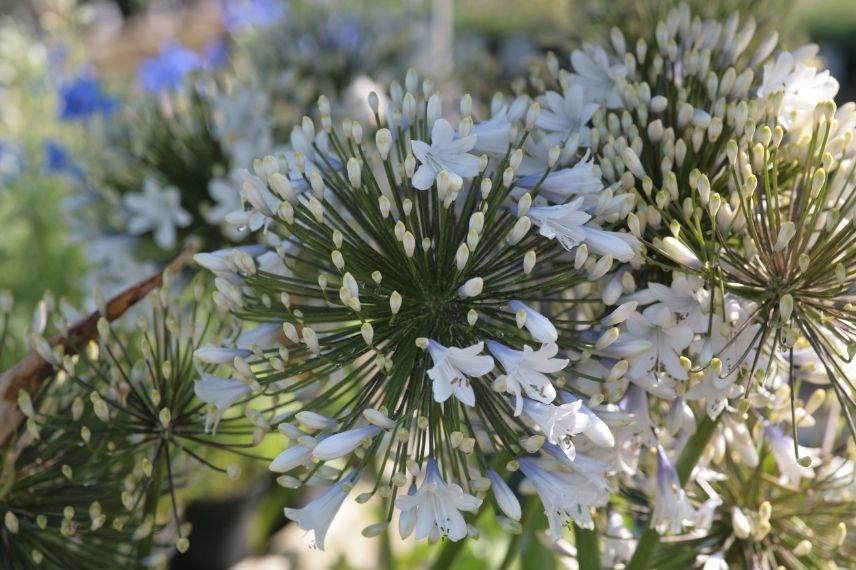
The 'Strawberry Ice' Agapanthus, probably the first agapanthus with pink tones.
Here is a small and very original agapanthus that has recently appeared on the market. The ‘Strawberry Ice’ Agapanthus indeed boasts dense umbels measuring 8 to 10 cm in diameter, composed of slightly pinkish florets at the edges. The cooler the temperatures and the more fully the flowers bloom, the more noticeable the pink colour becomes.
The clump of ribbon-like leaves is evergreen and its habit is upright rather than trailing. Additionally, it has several advantages: in summer, it withstands drought better than deciduous forms, and in winter, due to its evergreen foliage, it continues to catch the eye. It is also relatively resistant down to -10°C, making its cultivation in open ground possible in many regions. However, nothing prevents you from placing it in a pot where it will majestically grace your terrace. The plant reaches a height of 65 cm during flowering.
With its pastel tones, it fits perfectly into a romantic-style garden, where you can pair it with other plants in pink or purple tones, such as purple coneflower, loosestrife, or foxglove. For a more modern style, it will pair beautifully with other varieties of mauve, white, or blue agapanthus.
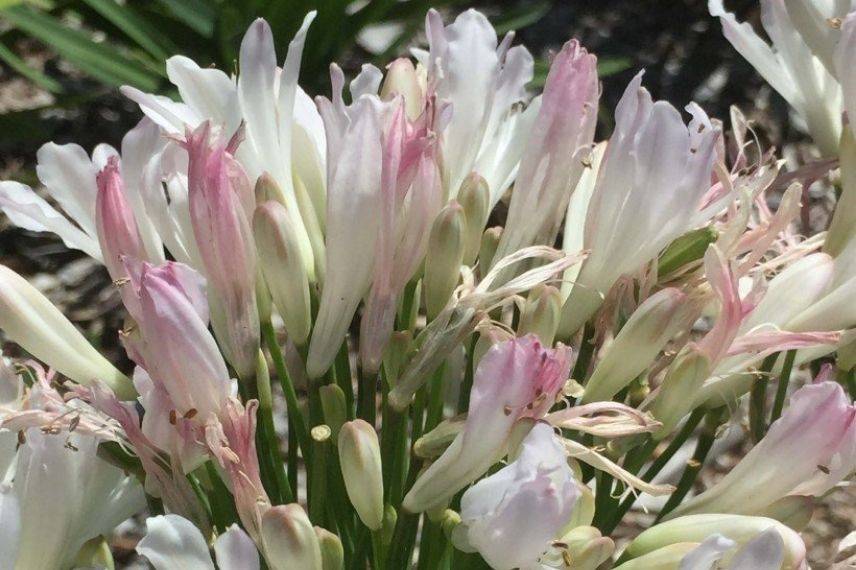
The 'Windsor Grey' Agapanthus, with its myriad of iridescent hues
The Agapanthus ‘Windsor Grey’ is exuberant and fascinating! Its giant umbels measure 18 cm in diameter and have an elusive colour, a slightly greyish white-blue. In the sun, they seem to shimmer, as if covered in iridescent pales. Finally, before fading, they take on a surprising light pink hue. Flowering occurs from August to September. Its habit is vigorous, with sturdy flower stems reaching 1.10 m in height, and the semi-evergreen light green foliage partially disappears in autumn. Moreover, with its relatively good hardiness, this Agapanthus acclimatises well in the ground in most regions, provided it receives suitable winter protection.
The vigour of this Agapanthus makes it an ideal variety for adding a contemporary character to the garden, for example, by pairing it with grey-blue ornamental grasses like Panicum virgatum. Its highly charismatic presence will also be perfectly suited to an English cottage garden.
On the terrace, in a large pot that showcases it, it will serve as an essential focal point, making it easier to protect for winter. Due to its substantial size, Agapanthus ‘Windsor Grey’ finds its place at the back of borders or in the background surrounded by companions with grey foliage. Furthermore, they are splendid cut flowers that will look magnificent in a bouquet.

- Subscribe!
- Contents
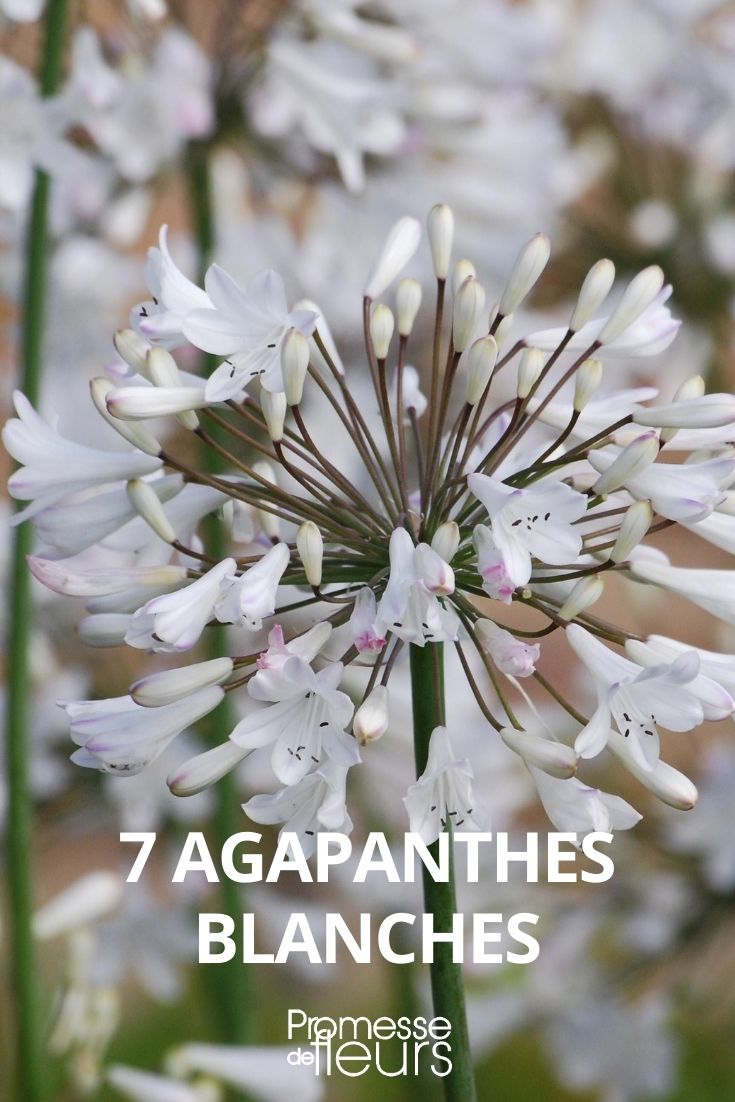































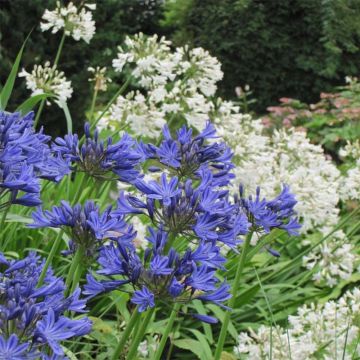
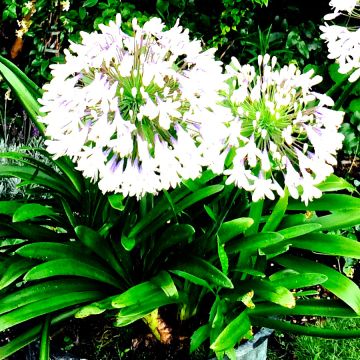
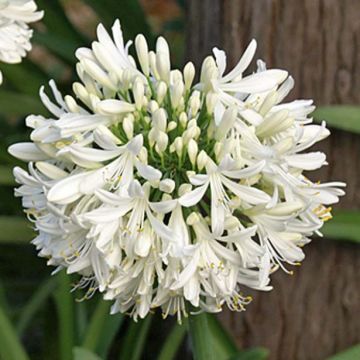
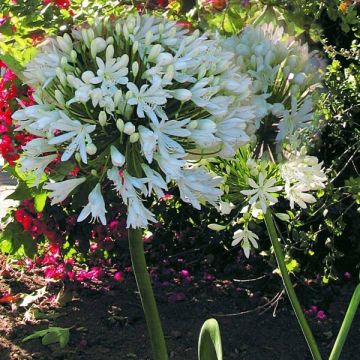
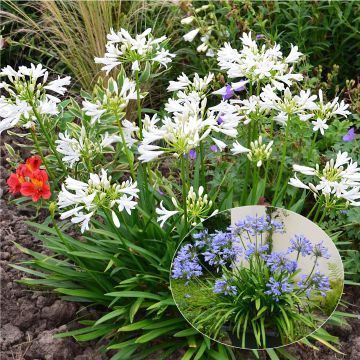
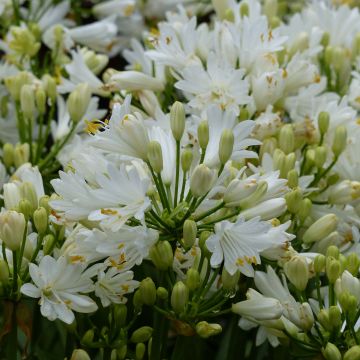
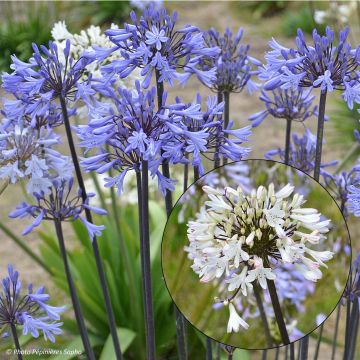
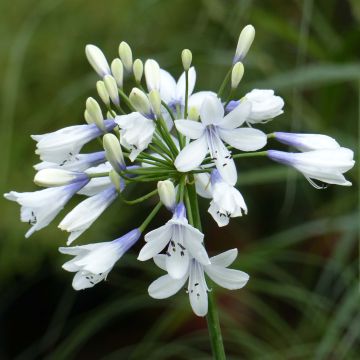
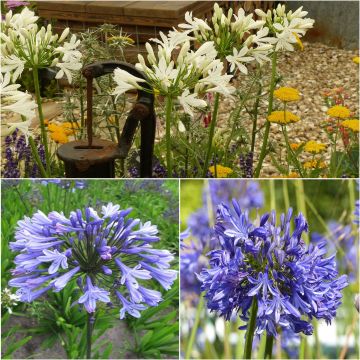
Comments